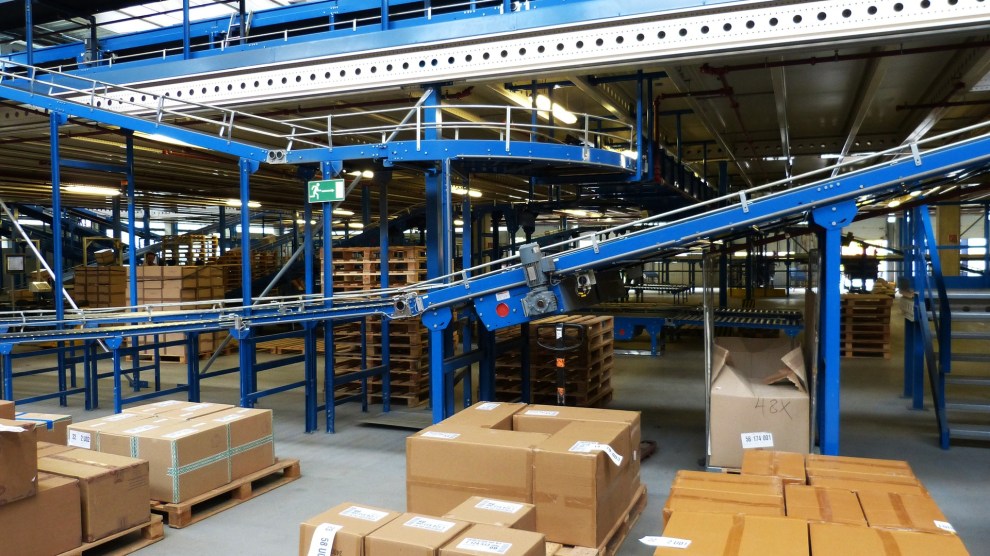Industrial real estate has been arguably the hottest commercial real estate property type over the last decade, fueled by the growth in e-commerce and the need for high-tech logistics centers. That has led to unprecedented supply, reduced vacancy rates, rapidly increasing rents and soaring property values.
The exceptional growth raises concerns that the segment is in a bubble that could pop. To gauge whether demand is sustainable, Yardi Matrix looked at the economic factors that produce a desire for industrial space.
The study examined the macroeconomic variables that historically have correlated with absorption and supply of industrial space. Those factors—including retail sales, housing starts and personal income—are projected to continue growing robustly through the middle of the decade. Given the strong historical correlation, we believe that demand for industrial space will continue unabated for at least several more years.
Our forecast calls for a 2.0% to 2.3% annual increase in total stock over the next five years, which would generate between 350 million and 370 million square feet of new industrial space each year through 2026, a total of 1.8 billion square feet. That follows the more than 290 million square feet of industrial space that has been delivered annually over the last three years, peaking at 306 million square feet in 2020. All that development, however, may not meet the demand for industrial space.
E-commerce, Retail Drive Growth
Industrial demand growth has many causes, first and foremost the e-commerce revolution. Online sales have risen rapidly over the last two decades, reaching a quarterly record of $222 billion, or 13.3% of all retail sales, in the second quarter of 2021, according to the U.S. Census Bureau. That’s up from $39.2 billion, or 4.2% of all retail sales, in 1Q10, and $5.7 billion, or 0.8% of all retail sales, in 1Q00, per the Census Bureau.
E-commerce has created a need for high-tech logistics facilities that are close enough to populated areas to ship products to consumers within hours and have sufficient technical amenities such as fast connectivity, high ceilings, bays to accommodate delivery trucks, and parking. These third-party logistics (3PL) facilities increasingly use technologies like robotics and artificial intelligence.
Since older industrial stock often lacks the technical capacity for such logistics usage, development of new space is necessary to accommodate the growth of 3PLs. Other drivers of industrial demand include manufacturing; food and beverage (cold storage); automobiles, tires and parts; as well as the building materials/construction and medical industries.
To produce our forecast for industrial supply over the next five years, we looked at various economic metrics that have in the past correlated with industrial growth. We found five economic metrics—housing starts, retail and wholesale inventories, retail sales (excluding auto and gasoline), personal income, and weighted import and export volumes—that were the most closely correlated with historical growth in industrial supply.
That these metrics related to demand for Industrial space is largely a function of how much the sector is sensitive to changes in economic growth and consumer demand, which accounts for about two-thirds of the U.S. economy. Ultimately, the demand for physical goods translates into the space required to physically handle and store those goods as they move from producer to end user.
Metro-Level Growth
Robust demand for industrial space is a nationwide phenomenon. By total square feet, the development pipeline is concentrated in the largest industrial markets, but smaller markets are growing more rapidly as a percentage of stock. That reflects both healthy demand for 3PL properties for deliveries near gateway population centers as well as the outsize growth of jobs and population to regions in the Southeast and Southwest that have a lower cost of living, less congestion, access to parks and recreation, and more favorable weather.
As of August 2021, 508 million square feet of industrial space was under construction in the U.S., according to CommercialEdge, with 191 million square feet, or 37.7%, concentrated in the top 10 markets. Dallas (31.9 million square feet) leads in the amount of space under construction, followed by Chicago (27.7 million square feet), Phoenix (25.0 million square feet), the Inland Empire (21.5 million square feet) and Houston (18.5 million square feet).
Only two of the top 10 metros in industrial space under construction are also among the top 10 in construction as a percentage of stock. The two in the top 10 for both total supply and percentage growth are Austin (13.1% of stock under construction) and Phoenix (9.5% of stock under construction). Metros that have the most industrial space under construction as a percentage of stock are primarily secondary and tertiary markets, led by Amarillo, Texas (20.6%); Lafayette-Lake Charles, La. (20.4%); Savannah, Ga. (17.7%); and Jackson, Miss. (15.2%).
Read the full Matrix Bulletin-Industrial Demand Paper-September 2021











Add Comment